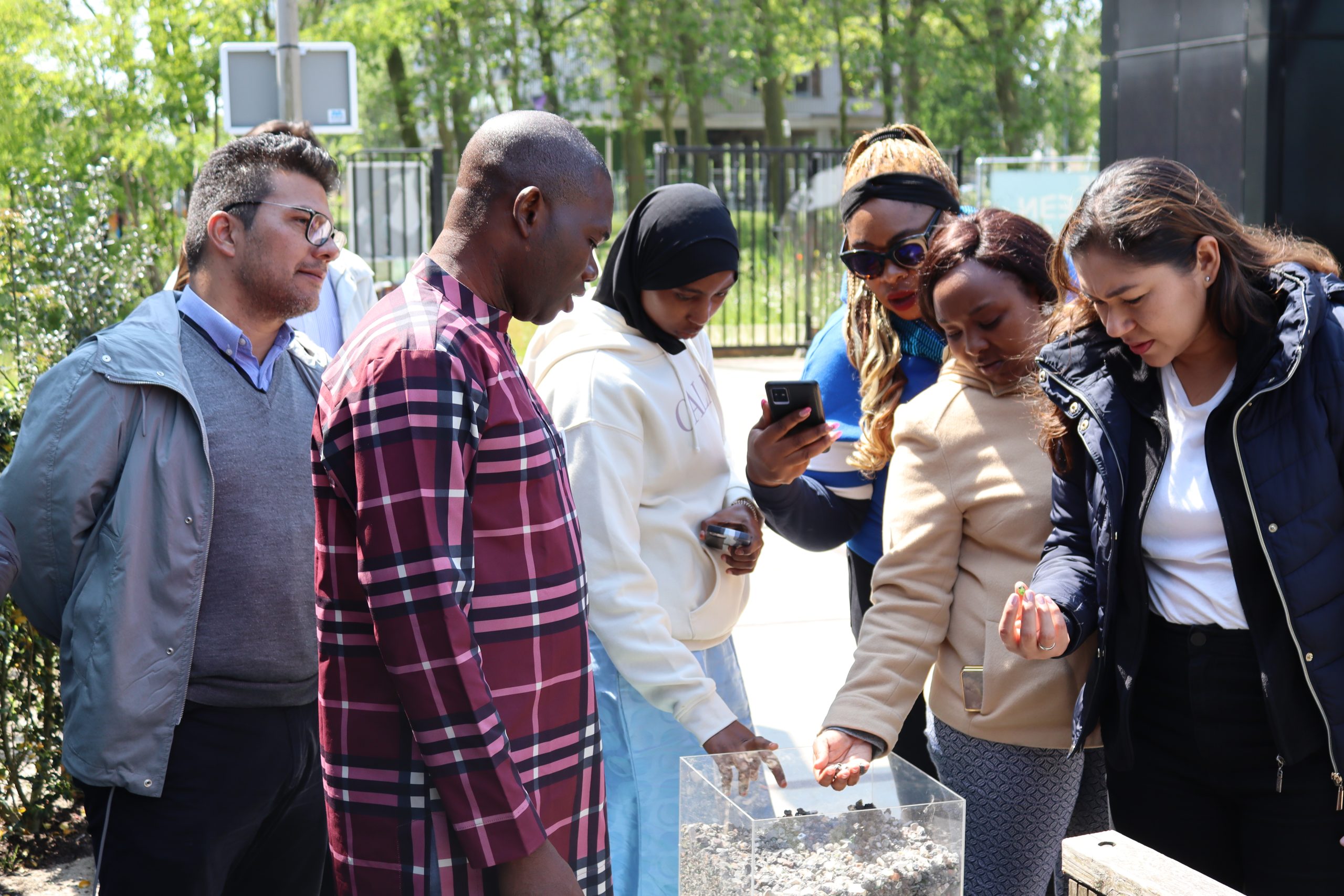By 2050, the Dutch central government wants to reduce the Netherlands’ emission of greenhouse gases to zero. They intend to do so by implementing energy alternatives like solar, wind, and hydropower – with the government planning to have 16% of all energy used in the Netherlands coming from a sustainable source by the end of 2023.
However, the government cannot execute this plan alone. A holistic energy transition calls for major technical and social changes that involve government, business, and citizens.
Felix Wolf is the Advisor for the Directorate of Public Participation of the Ministry of Infrastructure and Water Management and an academic at Erasmus University focusing on developing knowledge on participation. We spoke with Felix about citizen participation and the energy transition.

Participants of the training Urban Governance: Resilient and Smart Cities on a study visit
Localised Strategies
While the Dutch government works to oversee a structural energy transition, it is often up to local governments to enact local policy solutions that both deal with local challenges and contribute to the wider goal. From urban planning initiatives to water management policies that aim to cool down cities, and finding a different way to power homes, Dutch cities are the ones overseeing the energy transition locally.
They are beginning by reducing energy consumption:
“One of the biggest priorities of the transition is reducing the amount of gas used. House insulation is gaining popularity in the Netherlands – think of double windows, insulating the walls, the floor, and the roofs”.
Citizen Participation is Key
Because much of the strategy on the energy transition revolves around homes – involving the 8.3 million households in the Netherlands – citizen participation is key. As Felix explains:
“One of the biggest reasons to engage citizens is that the government doesn’t have much to say about the houses of the civilians. So, if you don’t cooperate with the people living in this house or in these houses, you cannot come very far”.
As Felix continues:
“I think the main reason to cooperate with civilians is that they know best what is good for their house because they’re living in it. So, if you’re asking, as a policymaker, ‘do I have the right policy?’, then you can check that by talking and cooperating with the civilians and see if the policy works”.
Points of Improvement
“But engaging citizens is not easy, of course, and citizen participation is a relatively recent concept, and both the government and the public are still navigating its complexities”.
There are some points of improvement that Felix identified in the citizen participation process in Dutch municipalities. One is better incorporating citizen initiatives, and another is ensuring better representation.
A holistic citizen engagement process is not a one-way street. Supporting citizen ideas and initiatives is important for local government to buff out their process. But, as Felix explains, there is an absence of the legal framework to arrange it. Due to issues of oversight, budget, or communication, the government cannot easily subsidise citizens to begin their initiatives and does not have a standardised system to do so.
The question of who gets subsidised is equally important, and equally difficult for the government to fairly do among a selection of citizen initiatives. This comes down to ensuring fair representation:
“If, as local government, you engage with communities, you have to ensure they represent the needs of that community or neighbourhood. Therefore, we need governmental systems that are fit to facilitate this engagement”.
How to Engage Citizens
There is no one-size-fits-all strategy to involve citizens and local stakeholders. Still, Felix shared some lessons learned. The first is to change one’s attitude to citizen participation – both at the local and national levels:
“We have to move from the top-down approach to a more collaborative one where the decision-making power is more equal”.
The second is that government officials should never underestimate the value of engaging citizens:
“While it might take more time and resources, it will ultimately lead to better-designed policies that respond to people’s needs. Participation should not be the final part of a project plan but should be integrated into the design of the intervention”.
Finally, Felix’s third recommendation is to increase the budget allocated for citizen participation and to continue working on building knowledge and best practices around citizen participation. Engaging citizens is an iterative process, and policymakers should never stop learning how to make the process more engaging and effective within their contexts.
“Citizen participation is complex and highly contextual. There is not one model that works in every setting. But we can try and innovate to find ways that create a meaningful collaboration that benefits both citizens and municipalities”.
Join our course on citizen participation & inclusive governance!
Are you interested in strategies and approaches to promote citizen participation in local governance? Make sure to join our Citizen Participation & Inclusive Governance Course. The course will take place in The Hague from 3 April 2024 to 16 April 2024.
